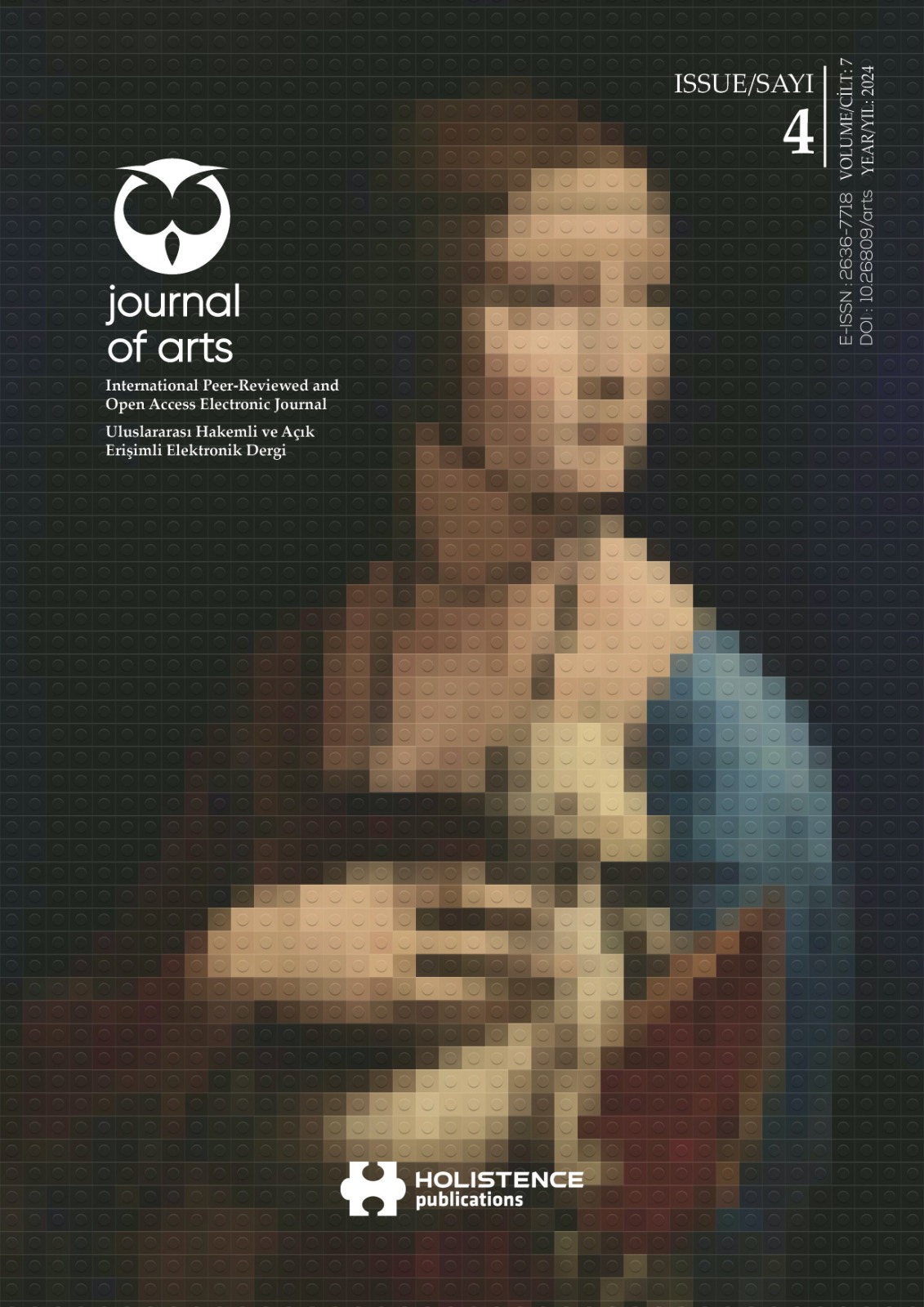Abstract
Igneous and metamorphic rocks, under the influence of different geological processes and various minerals that form their chemical structures during their formation in nature, have rich color diversity, remarkable vein patterns, bright and smooth texture, shiny surface appearance, individual hardness degrees that can be carved, harsh weather conditions and They are natural stones that have many physical qualities such as the ability to resist carrying loads. These stones, which have always attracted the attention of human beings with their perceptible features, not only enabled the construction of many functional tools shaped by primitive communities in the Paleolithic ages to meet their daily life needs, but also inspired the disclosure of emotions and thoughts, which are the products of the human mind. Thus, igneous and metamorphic rocks, which gained various spiritual meanings in the symbolic world imagination of the first human communities and became a symbolic object of perception in prehistoric times, continued to be used in ancient times, when more advanced civilizations were built, and became among the most privileged materials of Egyptian and Greek sculpture art. The aim of this article is to reveal the different physical and chemical properties of the igneous rocks quarried in the city of Aswan in Ancient Egypt and the metamorphic rocks found on the islands of Naxos and Paros in Ancient Greece, and to reveal the different physical and chemical properties of these rocks, which are shaped separately in Egyptian and Greek sculpture art. is to try to examine the symbolic meanings it brings to the figure.
References
BELKİS M. (1977). Batı Sanatında Biçimlenme ve Doğu Akdeniz, İstanbul Devlet Güzel Sanatlar Akademisi Yayın No: 58, İstanbul
BLAVATSKY, H. P. (2017). Gizli Öğreti 1. Cilt: Bilim, Din ve Felsefenin Sentezi, Mitra Yayınları, Çev: Rüya S. Uğurlu, İstanbul, ISBN 978-605-658-568-5
DAŞKESEN H. (2023). Siyah Rengin İkonografisi: Louise Nevelson Örneği, Türk Çevrimiçi Tasarım, Sanat ve İletişim Dergisi – TOJDAC ISSN: 2146-5193, Cilt: 13 Sayı: 2
PİKE, A. (2022). Ahlak ve Doğma 1.Cilt, Mitra Yayınevi, Çev: Rüya S. Uğurlu, İstanbul, ISBN 978-605-709-217-5
JUNG, C. G. (2012). Dört Arketip, Metis Yayınları, 8. Baskı, Çev: Zehra Aksu Yılmazer, İstanbul, ISBN -13: 987-975-342-414-1
KUN, N. (2000). Mermer Jeolojisi ve Teknolojisi İzmir Mermerciler Odası İzmir, Erişim Tarihi: [06.10.2023].
RUSCA R. (2012). Tanrıça Gizemleri, Ayna Yayınevi, Çev: Cengiz Erengil, İstanbul, ISBN 978-975-82297-48-1
PAKKAN, A. (2014). İknaton. Düşün-ü-yorum. (46), 10.
SARITAŞ, A. (2006). Burdur İli Mermer Sektörünün Kurumsal ve Ekonomik Yapısı, Tez (Yüksek Lisans), Sosyal Bilimler Enstitüsü, Akdeniz Üniversitesi
https://yaziyor28.wordpress.com/ Erişim Tarihi: [10.05.2023].
https://www.turkcebilgi.com/m%C4%B1s%C4%B1r_felsefesi#post Erişim Tarihi: [10.05.2023].
https://www.academia.edu/37647989/TEK_TANRIYA_%C4%B0NANAN_TEK_MISIR_FIRAVUNU_AKHENATON Erişim Tarihi: [07.06.2024].
https://adrianreynolds.ie/the-colour-white/?srsltid=AfmBOor8mUjtjojaWj7mWNoz1b-EAhREwz-IJavQui1AHBIYU1mZbY1Q Erişim Tarihi: [27.10.2023].
https://tr.wikipedia.org/wiki/Antik_M%C4%B1s%C4%B1r%27da_ruh_kavram%C4%B1 Erişim Tarihi: [10.07.2024].
https://grafizula.com/siyah-rengin-anlami/ Erişim Tarihi: [24.02.2023].

This work is licensed under a Creative Commons Attribution 4.0 International License.
Copyright (c) 2024 Holistence Publications


